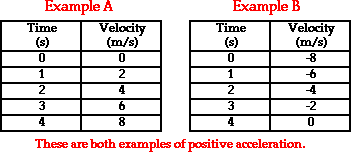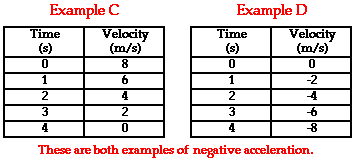|
查看: 25772|回复: 100
|
中学生物理讨论区
[复制链接]
|
|
|
微中子:只限于学校的讨论.旧的问题将不时被删除.请尽量用中文发表,尤其是回答问题的.至于问题本身,可以是英文,马来文和华文.
1. Use Newton’s Laws of motion to explain how the centripetal acceleration is produced for a conical pendulum.
2. Use Newton’s Laws of motion to explain why a body moving with uniform speed in a circle must experience a resultant force. What’s the direction of this force?
3. Explain why a passenger in aircraft experiences a resultant force. What’s the direction of this force?
[ Last edited by 微中子 on 31-7-2004 at 07:27 PM ] |
|
|
|
|
|
|
|
|
|
|
|
 发表于 3-7-2004 09:51 AM
|
显示全部楼层
发表于 3-7-2004 09:51 AM
|
显示全部楼层
请问这个的电阻力是多少?

各位,小弟愚昧,请问以上的整个电路所加起来的电阻力是多少?For your information, every resistor = 2ohm。最重要的是怎样算?为什么会得到这个答案? |
|
|
|
|
|
|
|
|
|
|
|
 发表于 3-7-2004 10:20 AM
|
显示全部楼层
发表于 3-7-2004 10:20 AM
|
显示全部楼层

重新画过,
可以得到三个是in parallel的.

[ Last edited by 微中子 on 3-7-2004 at 01:05 PM ] |
|
|
|
|
|
|
|
|
|
|
|
 发表于 30-7-2004 11:43 PM
|
显示全部楼层
发表于 30-7-2004 11:43 PM
|
显示全部楼层
中学生物理讨论区
我是一名SPM考生 , 但我在fizik里遇到了一些難題 ,
請幫幫我.....
1)cas positif 究竟能不能移動?
如果不能的話 , 那為什麼 "Cas positif mengalir dari titik yang berkeupayaan lebih
tinggi(positif) ke titik yang berkeupayaan lebih rendah(negatif)'?
2)如果arus是從wayar的左邊一個點流向右邊的一個點,那elektron是從那裡向那裡移動?
是和arus相同的方向還是相反的方向?
[ Last edited by 微中子 on 5-8-2004 at 04:15 PM ] |
|
|
|
|
|
|
|
|
|
|
|
 发表于 31-7-2004 01:38 PM
|
显示全部楼层
发表于 31-7-2004 01:38 PM
|
显示全部楼层
dioblo 于 30-7-2004 11:43 PM 说 :
我是一名SPM考生 , 但我在fizik里遇到了一些難題 ,
請幫幫我.....
1)cas positif 究竟能不能移動?
如果不能的話 , 那為什麼 "Cas positif mengalir dari titik yang berkeupayaan lebih
tinggi(p ...
1. Positive charge其實說的是失去電子的Lattice unit, 簡單來說﹐就是沒有電子的d帶正電單位。就導體來說﹐電子是(electron)是導電最基本單位。但就電子的相對軸來說Positive ion是在做運動。在此﹐只要認定Positive charge是不動即可。
2. 這要怪以前人了﹐早期在還沒發現電子之前﹐前人已定義說電流導向是正極至負極﹐故電流為正極(positive). 不過發現電子之後﹐認定其電量之後卻發現電的導向其實在本質上應該是反方向﹐從負至正的﹐而電流是負電的。不過﹐這些只是定義跟確實情況的混肴。跟之前前人所推斷的導電物理機製沒有差別。
|
|
|
|
|
|
|
|
|
|
|
|
 发表于 31-7-2004 02:54 PM
|
显示全部楼层
发表于 31-7-2004 02:54 PM
|
显示全部楼层
謝謝你的幫忙..... |
|
|
|
|
|
|
|
|
|
|
|
 发表于 3-8-2004 06:48 PM
|
显示全部楼层
发表于 3-8-2004 06:48 PM
|
显示全部楼层
2.i only know the resultant force of centripetal force is always towards the centre of circle
3.the passengers are "pushed" by the aeroplane,by which the aeroplane has a force acting on the passengers actually,the direction of this force is same with the direction of moving aeroplane
如有错误,请多多包涵
回答的时候请尽量用中文,谢谢.
[ Last edited by 微中子 on 3-8-2004 at 07:25 PM ] |
|
|
|
|
|
|
|
|
|
|
|
 发表于 4-8-2004 11:06 AM
|
显示全部楼层
发表于 4-8-2004 11:06 AM
|
显示全部楼层
gsan 于 31-7-2004 06:52 PM 说 :
微中子:只限于学校的讨论.旧的问题将不时被删除.请尽量用中文发表,尤其是回答问题的.至于问题本身,可以是英文,马来文和华文.
1. Use Newton’s Laws of motion to explain how the centripetal accelerati ...
1. 牛頓運動定律基本上是闡明“力”的定義。而將其“量化”。速度的改變是因為加速度﹐也就是改變物理系統的運動狀態。這就是“力”作用。Conical Pendulum在運動的當兒作的是Centripetal motion。就慢慢每個infinitesimal point來看﹐速度是個變量(方向不斷改變)。就其改變的量來看﹐這個變化量(Acceleration)是指向運動軸軸心。也就是Centripetal Acceleration.
2. 就觀察者的Inertial frame, 此力指向軸心。
3. 承接2和1﹐若以pendulum本身為inertial frame(為觀察者)﹐則此作用力為2的反方向。 |
|
|
|
|
|
|
|
|
|
|
|
 发表于 5-8-2004 01:16 AM
|
显示全部楼层
发表于 5-8-2004 01:16 AM
|
显示全部楼层
Asurahyde 于 31-7-2004 01:38 PM 说 :
1. Positive charge其實說的是失去電子的Lattice unit, 簡單來說﹐就是沒有電子的d帶正電單位。就導體來說﹐電子是(electron)是導電最基本單位。但就電子的相對軸來說Positive ion是在做運動 ...
我蛮欣赏你的,你是念纯物理的吗? |
|
|
|
|
|
|
|
|
|
|
|
 发表于 5-8-2004 01:55 AM
|
显示全部楼层
发表于 5-8-2004 01:55 AM
|
显示全部楼层
樓上的兩位 , 你們是大學生嗎?
我想繼續攻讀物理 , 但又怕讀這科后"出路'不多.......
請問讀了這科后能做什麼?
甚麼大學有提供這科?
大約多少錢? |
|
|
|
|
|
|
|
|
|
|
|
 发表于 8-8-2004 01:02 PM
|
显示全部楼层
发表于 8-8-2004 01:02 PM
|
显示全部楼层
可以帮我这一个electric 的问题吗???
A series circuit containing a capacitor C and a 1k(ohm) resistance is suddenly connected to 100V dc supply. Calculate the initial value of the charging current. Calculate also the capacitance of the capacitor if it takes the charging current 0.223ms to fall to 0.08A.
Ans 0.1A , 1uf ) 0.1A , 1uf ) |
|
|
|
|
|
|
|
|
|
|
|
 发表于 8-8-2004 04:43 PM
|
显示全部楼层
发表于 8-8-2004 04:43 PM
|
显示全部楼层
从kirchoff's law,
我们可以得到
iR = V - q/C
dq/dt = V/R - q/RC
当t = 0, q = 0
所以,
-RC ln (1 - q/CV) = t
1 - q/CV = e^(-t/RC)
q = CV(1 - e^(-t/RC))
i = dq/dt = V/R e^(-t/RC)
t = 0,
i = V/R = 100/1000 = 0.1A
i = 0.1 e^(-t/1000C)
t = 0.223*10^(-3)
i = 0.08
ln(0.08/0.1) = -0.223*10^(-3) / 1000C
C = 0.223*10^(-6) / ln(10/8) = 10^(-6) F
= 1 μF
合并到中学生物理讨论区 |
|
|
|
|
|
|
|
|
|
|
|
 发表于 8-8-2004 07:13 PM
|
显示全部楼层
发表于 8-8-2004 07:13 PM
|
显示全部楼层
|
|
|
|
|
|
|
|
|
|
|
 发表于 8-8-2004 07:42 PM
|
显示全部楼层
发表于 8-8-2004 07:42 PM
|
显示全部楼层
还有一提
A 10μF capacitor has an insulator resistance of 20M(ohm) , If the capacitor is charged to 200V dc , determine the time required after disconection from the supply for the potential difference to fall to 80V .
Ans : (183.3s) |
|
|
|
|
|
|
|
|
|
|
|
 发表于 9-8-2004 08:08 AM
|
显示全部楼层
发表于 9-8-2004 08:08 AM
|
显示全部楼层
同样使用kirchoff's law,
既然已经把电源取出了,
所以我们可以用之前的
iR = V - q/C, 让V = 0
所以
i = - q/RC
dq/dt = - q/RC
然后可以得到
q = Qe^(-t/RC), Q = CVo,
在这里Vo是电容器在取出电源那一刻的pd.
也是电源的200V
电容器的V = q/C
V = Vo e^(t/RC)
RC = 200s
ln (80/200) = -t/200
t = 200 ln (5/2)
t = 183.3s.
其实这类的问题都是和exponential function有关的.
所以有时候是可以猜出formula (或者背啦,虽然我不鼓励背这种formula)

还有,尽量避免连续发贴,也可以考虑编辑贴子. |
|
|
|
|
|
|
|
|
|
|
|
 发表于 10-8-2004 01:44 AM
|
显示全部楼层
发表于 10-8-2004 01:44 AM
|
显示全部楼层
再来谢谢你微中子哥哥 |
|
|
|
|
|
|
|
|
|
|
|
 发表于 10-8-2004 01:56 AM
|
显示全部楼层
发表于 10-8-2004 01:56 AM
|
显示全部楼层
|
这个formula (iR = V - q/C) 是 how 来的??? |
|
|
|
|
|
|
|
|
|
|
|
 发表于 11-8-2004 06:24 AM
|
显示全部楼层
发表于 11-8-2004 06:24 AM
|
显示全部楼层
Intel2003 于 10-8-2004 01:56 AM 说 :
这个formula (iR = V - q/C) 是 how 来的???
是用Kirchoff's Law,
其实和能量守恒有一些关系. |
|
|
|
|
|
|
|
|
|
|
|
 发表于 14-8-2004 09:17 AM
|
显示全部楼层
发表于 14-8-2004 09:17 AM
|
显示全部楼层
什么是电容????
那里可以找到这些的英文/马来文术语。 |
|
|
|
|
|
|
|
|
|
|
|

楼主 |
发表于 23-8-2004 10:59 PM
|
显示全部楼层
谁能解释以下的东西?
The general RULE OF THUMB is:
If an object is slowing down, then its acceleration is in the opposite direction of its motion.
This RULE OF THUMB can be applied to determine whether the sign of the acceleration of an object is positive or negative, right or left, up or down, etc. Consider the two data tables below.
In Example A, the object is moving in the positive direction (i.e., has a positive velocity) and is speeding up. When an object is speeding up, the acceleration is in the same direction as the velocity. Thus, this object has a positive acceleration.
In Example B, the object is moving in the negative direction (i.e., has a negative velocity) and is slowing down. When an object is slowing down, the acceleration is in the opposite direction as the velocity. Thus, this object also has a positive acceleration.

This same RULE OF THUMB can be applied to the motion of the objects represented in the two data tables below.
In Example C, the object is moving in the positive direction (i.e., has a positive velocity) and is slowing down. When an object is slowing down, the acceleration is in the opposite direction as the velocity. Thus, this object has a negative acceleration.
In Example D, the object is moving in the negative direction (i.e., has a negative velocity) and is speeding up. When an object is speeding up, the acceleration is in the same direction as the velocity. Thus, this object also has a negative acceleration.
 |
|
|
|
|
|
|
|
|
|
| |
 本周最热论坛帖子 本周最热论坛帖子
|